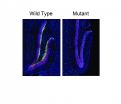(Press-News.org) Hospitals with aggressive treatment styles, also known as high hospital care intensity (HCI), had lower rates of patients dying from a major complication (failure to rescue) but longer hospitalizations, writes Kyle H. Sheetz, M.D., M.S., of the Center for Healthcare Outcomes and Policy, Ann Arbor, Mich., and colleagues.
The intensity of medical care varies around the country. Intensity is synonymous with an aggressive treatment style and it has been implicated in rising health care costs, especially during the end-of-life period. Inpatient surgery also is a cost burden. The authors analyzed national Medicare data to examine increased HCI and outcomes after major surgery.
The data identified 706,520 patients at 2,544 hospitals who underwent 1 of 7 major cardiovascular, orthopedic or general surgical operations. The Dartmouth Atlas provides metrics of health care intensity for Medicare beneficiaries in their last two years of life.
Patients who had surgery at high HCI vs. low HCI hospitals had increased major complication rates. However, patients who had surgery at high HCI hospitals were 5 percent less likely to die of a major complication (failure to rescue) than at a low HCI facility. However, patients treated at high-HCI hospitals had longer hospitalizations, more inpatient deaths and lower hospice use during the final two years of life.
"Hospital care intensity has an independent influence on established quality metrics for surgical care, although its ability to improve quality through direct augmentation appears limited."
INFORMATION:
JAMA Surgery. Published online October 1, 2014. doi:10.1001/jamasurg.2014.552
An author made conflict of interest disclosures. Please see the article for additional information, including other authors, author contributions and affiliations, financial disclosures, funding and support, etc.
To contact author Kyle H. Sheetz, M.D., M.S., call Shantell Kirkendoll..
Hospitals with aggressive treatment styles had lower failure-to-rescue rates
2014-10-01
ELSE PRESS RELEASES FROM THIS DATE:
Montmorency tart cherry juice lowered blood uric acid levels and a marker for inflammation
2014-10-01
LANSING, Mich. October 1, 2014 – Tart cherries have long been researched for their association with pain relief – ranging from gout and arthritis joint pain to exercise-related muscle pain. A new study published in the Journal of Functional Foods is the first to report consumption of Montmorency tart cherries caused changes in uric acid metabolism, which can have an impact on joint pain. The study also detected increases in specific anthocyanin compounds in the bloodstream after consuming tart cherries.
In the study, Montmorency tart cherry juice reduced blood levels ...
UMN research pinpoints microRNA tied to colon cancer tumor growth
2014-10-01
MINNEAPOLIS/ST PAUL (October 1, 2014) – Researchers at the University of Minnesota have identified microRNAs that may cause colon polyps from turning cancerous. The finding could help physicians provide more specialized, and earlier, treatment before colon cancer develops.
The findings are published today in The Journal of Pathology.
The American Cancer Society estimates over 134,000 people will be diagnosed with colon cancer in 2014, despite the expanded screening processes now available. This year alone, about 50,000 people will die because of the disease.
Research ...
Fibromyalgia and the role of brain connectivity in pain inhibition
2014-10-01
New Rochelle, NY, October 1, 2014—The cause of fibromyalgia, a chronic pain syndrome is not known. However, the results of a new study that compares brain activity in individuals with and without fibromyalgia indicate that decreased connectivity between pain-related and sensorimotor brain areas could contribute to deficient pain regulation in fibromyalgia, according to an article published in Brain Connectivity, a peer-reviewed journal from Mary Ann Liebert, Inc., publishers. The article is available free on the Brain Connectivity website at http://online.liebertpub.com/doi/full/10.1089/brain.2014.0274 ...
Spiders: Survival of the fittest group
2014-10-01
Along rivers in Tennessee and Georgia, scientists have been studying brownish-orange spiders, called Anelosimus studiosus, that make cobwebby nests "anywhere from the size of a golf ball to the size of a Volkswagen Beetle," researcher Jonathan Pruitt says. The individual spiders are only the size of a pencil eraser, but they form organized groups that can catch prey ranging from fruit flies to small vertebrates. "We have found carcasses of rats and birds inside their colonies," Pruitt says. Unlike most spiders, which are solitary, these social spiders work together in groups.
Now ...
New molecule fights oxidative stress; May lead to therapies for cancer and Alzheimer's
2014-10-01
COLUMBIA, Mo. – Breathing oxygen helps the body create energy for its cells. As a result of the breathing process, reactive molecules called "free radicals" are produced that often cause damage to proteins and genes found in cells. This damage is known as oxidative stress. Free radicals also have been linked to cancer, Alzheimer's and Parkinson's disease. Now, investigators at the University of Missouri have discovered a molecule that treats oxidative stress.
"Oxidative stress can cause damage to the building blocks of a cell, resulting in excessive cell proliferation, ...
Decreased ability to identify odors can predict death
2014-10-01
For older adults, being unable to identify scents is a strong predictor of death within five years, according to a study published October 1, 2014, in the journal PLOS ONE. Thirty-nine percent of study subjects who failed a simple smelling test died during that period, compared to 19 percent of those with moderate smell loss and just 10 percent of those with a healthy sense of smell.
The hazards of smell loss were "strikingly robust," the researchers note, above and beyond most chronic diseases. Olfactory dysfunction was better at predicting mortality than a diagnosis ...
AAO-HNSF clinical practice guideline: Tinnitus
2014-10-01
ALEXANDRIA, VA — The American Academy of Otolaryngology—Head and Neck Surgery Foundation has released the first ever mutli-disciplinary, evidence-based clinical practice guideline to improve the diagnosis and management of tinnitus, the perception of sound—often ringing—without an external sound source. The guideline was published today in the journal Otolaryngology–Head and Neck Surgery.
"Tinnitus affects 10-15% of adults in the United States. It is the most common service-related disability among our military veterans. Yet despite its prevalence and effect on quality ...
Decreased ability to identify odors may predict 5-year mortality
2014-10-01
For older adults, being unable to identify scents may be a predictor of mortality within five years, according to a study published October 1, 2014, in the journal PLOS ONE by Jayant Pinto from The University of Chicago and colleagues.
The study was part of the National Social Life, Health and Aging Project (NSHAP), the first in-home study of social relationships and health in a large, nationally representative sample of men and women ages 57 to 85. Researchers first surveyed 3,000 participants in 2005-06, assessing their ability to identify five distinct common odors, ...
Drug treats inherited form of intellectual disability in mice
2014-10-01
Studying mice with a genetic change similar to what is found in Kabuki syndrome, a inherited disease of humans, Johns Hopkins researchers report they have used an anticancer drug to "open up" DNA and improve mental function.
Along with a potential treatment for the intellectual disability seen in Kabuki syndrome, the study's findings also suggest a new way of thinking about a category of genetic diseases known as Mendelian disorders of the epigenetic machinery, the researchers say. In these disorders, a genetic mutation causes errors in the way proteins and chemicals ...
Study finds potential new target to treat asthma attacks brought on by colds
2014-10-01
Researchers have identified a molecular mechanism that could explain why the common cold can bring on life-threatening asthma attacks.
Published today in Science Translational Medicine, the findings indicate this may be a potential target for new drugs that could be more effective than existing treatments.
Viruses that infect the airways are the most common cause of asthma attacks, accounting for 80-90 per cent of cases. The great majority of these are rhinoviruses, which are the predominant cause of the common cold.
Although illnesses caused by rhinoviruses are ...





